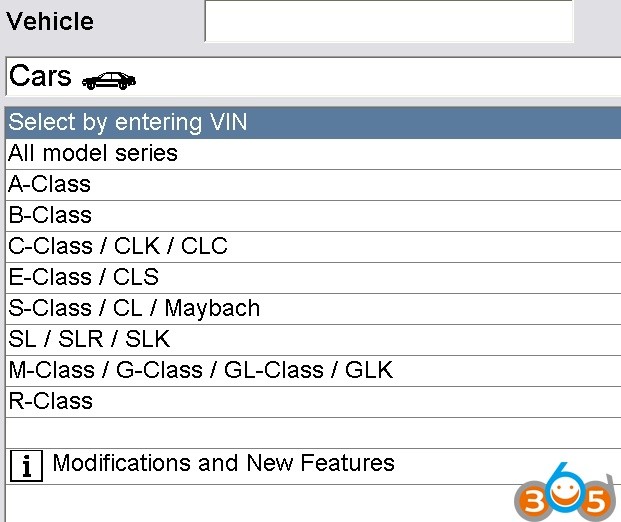For Mercedes-Benz automotive technicians and enthusiasts, understanding diagnostic and programming procedures is crucial. The terms “offline coding” and “offline programming” often arise, especially when discussing tools like Xentry and DAS. This guide delves into the intricacies of Mercedes offline programming, specifically focusing on Xentry 2018 Offline Programming capabilities and how they relate to older systems and contemporary diagnostic approaches.
Initially, the concept of offline coding emerged to facilitate SCN (Software Calibration Number) codings in situations where a workshop lacked a stable internet connection for online procedures. SCN or CVN (Calibration Verification Number) coding, implemented in Mercedes vehicles around 2003, aimed to ensure software integrity and proper configuration. It’s vital to differentiate offline coding from basic “codings,” which can be performed using standard DAS (Diagnostic Assistance System) or the more in-depth Developer DAS.
Simple codings typically involve adjustments and configurations without complete software replacement. In contrast, offline coding often necessitates flashing a control unit with updated or the same software version, followed by SCN coding to activate it within the vehicle’s network. While offline coding offers a degree of autonomy, it’s generally intertwined with the necessity for SCN coding, regardless of internet connectivity during the initial process.
One perceived advantage of offline coding is the potential time saved by performing initial steps independently. However, the practicality of this approach is debatable. While a technician might execute offline coding and subsequently seek SCN coding from a dealership, the cost-effectiveness remains questionable. Dealerships may still charge similar fees, regardless of whether the initial coding was performed in their workshop or externally.
When navigating Mercedes systems, understanding vehicle identification numbers (VINs) is essential. For example, in a W211 chassis, the internal VIN WDB2110261AXXXXXX reveals key vehicle characteristics. The character following “WDB” denotes the body style (e.g., “U” for 211, “F” for Sedan). Subsequent digits specify the model within the body type, mirroring the internal VIN. Further digits provide information about the Supplemental Restraint System (SRS) and model year. The Electronic Parts Catalogue (EPC) offers a convenient method to decode VINs, simplifying the identification of internal VIN digits 4-9.
Moving to “office programming,” which refers to ECU (Engine Control Unit) programming in an offline environment, several methodologies exist. DAS provides offline ECU programming capabilities, while Xentry, particularly Xentry 2018, typically requires a Xentry calculator for certain offline functions, potentially involving additional costs. Vediamo, a tool utilized within Daimler factories, stands out as a robust solution for offline ECU programming across a broad spectrum of Mercedes-Benz models, offering extensive vehicle coverage. For specific models like the 204.041, compatibility with DAS 204 systems might present a viable, cost-free offline programming alternative. Among these options, Vediamo is often regarded as the most versatile and comprehensive for offline programming needs.
It’s important to recognize the evolution of Mercedes diagnostic software. DAS primarily caters to older models, generally pre-2011, while Xentry is designed for newer vehicles, typically from 2011 onwards. However, DAS remains relevant as a communication pathway for many vehicles, even contemporary ones.
While it’s technically feasible to configure DAS for offline programming by manipulating flash folders, Xentry, including Xentry 2018, primarily emphasizes online programming. Online programming necessitates valid login credentials for secure access to Mercedes-Benz servers.
Historically, offline programming represented an earlier service approach. Modern automotive diagnostics increasingly favor online services due to enhanced safety protocols and operational efficiency. Online programming provides a more secure and rapid method for software updates and configurations.
For users seeking to enable offline programming within DAS, various DIY methods have emerged, often involving file modifications within the DAS software directory. These methods, while potentially functional, carry inherent risks and are undertaken at the user’s discretion. One common approach involves altering the “flashen.ini” file located in the DAS program directory by adding specific VIN entries to enable offline functionality for particular vehicle models. However, the reliability and safety of these user-derived solutions are not guaranteed, and users assume full responsibility for any consequences.
A more secure and professionally recommended approach involves utilizing pre-configured DAS systems specifically enabled for offline programming. These solutions, often available through reputable diagnostic tool providers, offer a more reliable and supported pathway to offline capabilities. While incurring a cost, these enabled DAS systems mitigate the risks associated with DIY modifications and provide a more secure and stable offline programming environment.
Versions like DAS 2012.11 are often cited as highly effective for offline programming, particularly for Mercedes vehicles manufactured before 2010. This specific version has gained a reputation for reliability and proven performance across numerous vehicle applications. For newer vehicles and online programming needs, the latest Xentry versions, such as 07.2018 or 09.2018 Xentry, are recommended, offering comprehensive diagnostic and programming functionalities for both older and contemporary Mercedes-Benz models.
In conclusion, while Xentry 2018 offline programming might present certain complexities and potentially necessitate supplementary tools or online access for SCN coding, understanding the historical context of offline coding and the capabilities of DAS and Vediamo remains valuable. The automotive diagnostic landscape is continuously evolving towards secure and efficient online programming solutions, yet offline methods, particularly with DAS for older vehicles, still hold relevance in specific scenarios. Choosing the appropriate approach depends on the vehicle model, desired programming depth, and the technician’s access to online resources and diagnostic tools.
